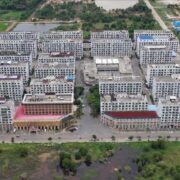Nov factory output at 29-mo high

Local manufacturing activity rose to a 29-month high in November, powering through headwinds from recent typhoons that created supply problems and inflationary pressures for factories.
A survey of around 400 companies showed that the Philippines’ Purchasing Managers’ Index (PMI)—a closely watched gauge of manufacturing performance favored by policymakers around the world—had risen to 53.8 from 52.9 in October, S&P Global reported on Monday.
This marked the 15th straight month that the PMI has stayed above the 50-mark that separates growth from contraction. At the same time, the November figure was the strongest reading since mid-2022.
Maryam Baluch, economist at S&P Global Market Intelligence, said Filipino factories ramped up production in anticipation of greater sales in the coming months.
“Hiring, purchasing activity and postproduction inventories were also raised in preparation. New sales recorded further growth, as demand conditions continued to improve,” Baluch said.
Survey results showed demand conditions had improved for the 15th straight month in November, although the pace of growth had moderated to a three-month low. But S&P said the expansion in new orders “remained solid and historically strong.”
The robust appetite for Filipino products had prompted manufacturers to intensify their purchase of materials needed for production. But the increase in input buying did not translate into a fatter inventory of preproduction materials, as factories often utilized them immediately to fulfill the new orders.
As it is, the expected surge in demand amid the Christmas shopping season was so strong that manufacturers had to increase their stock of finished products—which rose for the first time in four months.
This means more workers were needed to meet the higher production needs. S&P said job creation within the sector had continued for a third straight month in November, albeit at a pace that was “just shy of October’s recent peak.”
Inflationary pressures
But S&P said factories were not spared from disruptions caused by powerful storms that had hit the Philippines late in the season.
Companies said adverse weather conditions had led to port congestion and flooding, which “severely” delayed the delivery of preproduction materials. S&P reported that average lead times had lengthened “rapidly” to the longest degree in over three years.
Meanwhile, inflationary pressures intensified, pushing up the expenses of manufacturers to the highest since February 2023. The added production costs, in turn, were passed on to consumers through higher selling prices. S&P said output charge inflation soared to a 21-month high in November.





















